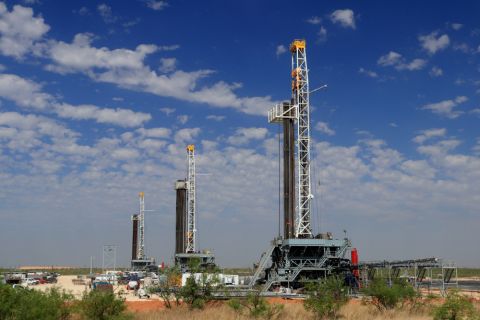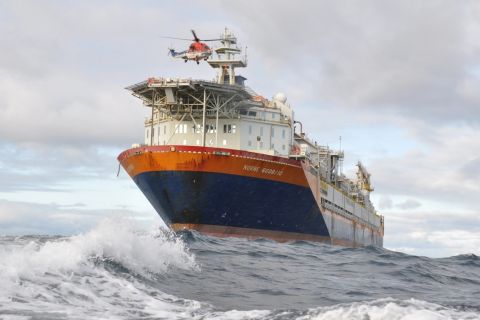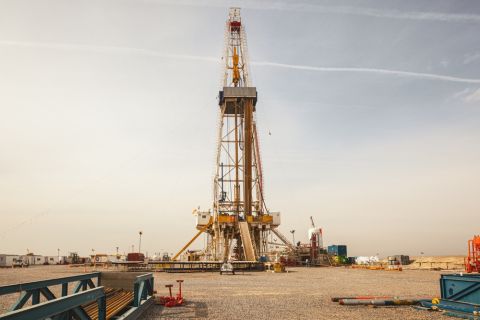Presented by:
[Editor's note: A version of this story appears in the June 2021 issue of Oil and Gas Investor magazine. Subscribe to the magazine here.]
Boy howdy! It’s investment time for E&Ps. The boom is on, but it is not a boom in drilling rigs or crazy investments. The only land grab that makes sense now is for snapping up contiguous acreage. This boom is about delivering free cash flow (FCF).
During their first-quarter conference calls, E&P companies showed they can deliver FCF and use it wisely—whether to pay down debt, buy back shares or distribute it. They are finally transferring wealth from their coffers to investors’ bank accounts, a welcome and necessary outcome of the strategy that is capital discipline.
During investor presentations, the leadoff slides in the investor-targeted slide decks were all about money—how to make it and better spend it—and not about those boring old operational details such as acreage position, wells drilled, EURs and frac stages or water. No. Although important, those details came later in the presentations.
Higher commodity prices in the quarter provided a big boost, even as the petroleum engineers were tasked with holding production to a conservative 5% to 10% growth rate and absent acquisitions. In many cases, even with acquisitions made, buyers vowed to hold overall production nearly flat and reduce the pro forma number of rigs working.
Thanks to prudently reduced capex and more cash coming in the door from the commodity price recovery, the E&P industry is reporting more FCF. We hope, and we expect, that generalist investors sit up and notice, awakening like Rip Van Winkle from a long slumber.
In the first quarter, ConocoPhillips Co. delivered $900 million of FCF. Pioneer Natural Resources Co. reported $369 million of FCF, with an estimate of delivering an impressive $2.7 billion for the entire year. Diamondback Energy Inc. delivered $331 million in the quarter. Devon Energy Corp.: $399 million. EQT Corp.: $259 million. PDC Energy Inc.: $175 million. Magnolia Oil & Gas Corp.: $101 million.
Marathon Oil Corp. hiked its dividend by 30% and is targeting $500 million of additional gross debt reduction in 2021, bringing the total to $1 billion, said Morgan Stanley. Devon Energy boosted its fixed-plus-variable dividend of 34 cents per share by 13% over fourth-quarter 2020 and paid down a boatload of debt.
And so on and on. There should be more to come.
RELATED:
US Shale to Deliver ‘Super-profits’ on Projected Record Cash Flow
PDC Energy, for one, said, “Assuming $55 per bbl WTI, $2.50 per Mcf Nymex natural gas and $15 NGL realizations, PDC now expects to generate more than $600 million of FCF in each of the next three years. The projected cumulative FCF of $1.8 billion to $2 billion equates to more than 50% of PDC Energy’s current market cap and more than 40% of the current enterprise value.
“Under the same price assumptions, PDC Energy’s reinvestment rate equates to less than 50% of its adjusted cash flows from operations in the development of crude oil and natural gas.”
PDC Energy said it plans to pay down at least $850 million of total debt and return more than $650 million of capital to shareholders through its stock repurchase efforts and future dividend program.
Many companies are aiming for debt of only 1.0x or 1.5x by next year. We love the use of proceeds from these cash flow volumes. Magnolia said it expects to pay its first dividend in the third quarter and semi-annually thereafter. Meanwhile, it continues a slow but steady repurchase of shares every quarter.
EOG Resources Inc. delivered a $600 million dividend surprise of $1 per share, which brings its total dividend payout to shareholders to $2.65 a share by year-end (for a 3.4% yield). The sum of this year’s regular plus special dividend totals $1.5 billion of cash returns, according to a report from Morgan Stanley.
Cimarex Energy Co. ($231 million in FCF) continued to reduce debt, all while it paid a dividend of 27 cents per share (it has paid dividends ever since 2006).
Many, many years ago in this column, we said the industry’s thinking appeared to be changing from solely producing oil and gas in ever-greater quantities, to making money. In practice, the commitment to that has waxed and waned through the years.
For the rest of this year, E&P companies face rising labor, trucking, diesel fuel and steel costs, not to mention well servicing costs creeping back. “We continue to see attractive upside across much of our coverage, which we estimate intrinsically reflects average oil prices about 25% below the strip currently, despite offering FCF yields greater than 3x the broader market,” said Morgan Stanley’s Devin McDermott in a report.
Other analysts’ comments were similarly upbeat. Stephen Inc.’s Jim Wicklund said in his weekly note: “Most E&P companies seem to beat expectations, and there is little question that budget discipline will hold. If you can only spend 70% of cash flow and oil prices go up, spending at some level is probable to be positively impacted. But don’t expect a wholesale rush to spending. ROIC [return on invested capital] and FCF yield trump production growth. Take that to the bank.
Recommended Reading
E&P Highlights: May 13, 2024
2024-05-13 - Here’s a roundup of the latest E&P headlines, with a couple fields coming online, as well as new contract awards.
SM Energy Targets Prolific Dean in New Northern Midland Play
2024-05-09 - KeyBanc Capital Markets reports SM Energy’s wells “measure up well to anything being drilled in the Midland Basin by anybody today.”
Vår Selling Norne Assets to DNO
2024-05-08 - In exchange for Vår’s producing assets in the Norwegian Sea, DNO is paying $51 million and transferring to Vår its 22.6% interest in the Ringhorne East unit in the North Sea.
Crescent Energy: Bigger Uinta Frac Now Making 60% More Boe
2024-05-10 - Crescent Energy also reported companywide growth in D&C speeds, while well costs have declined 10%.





